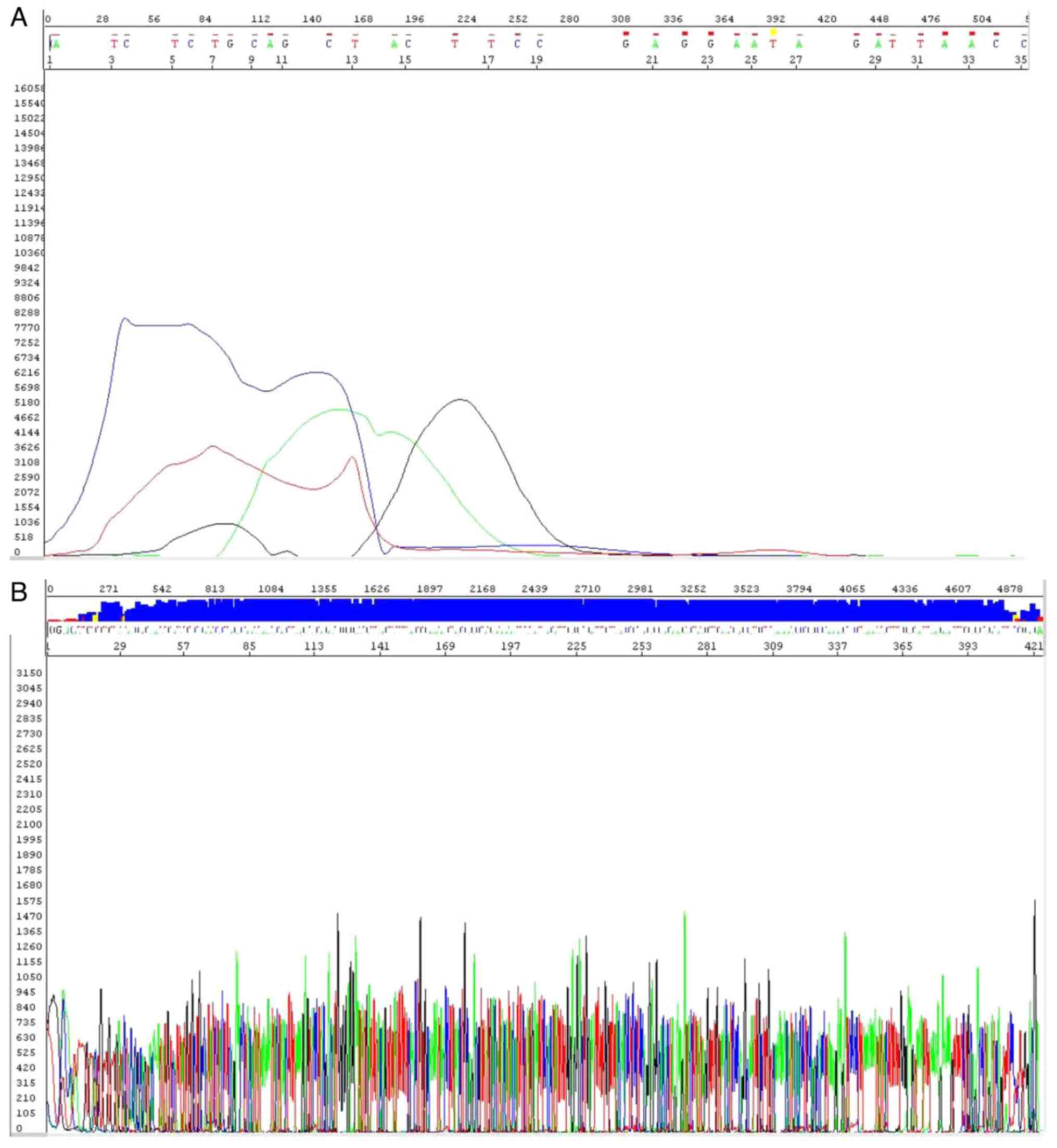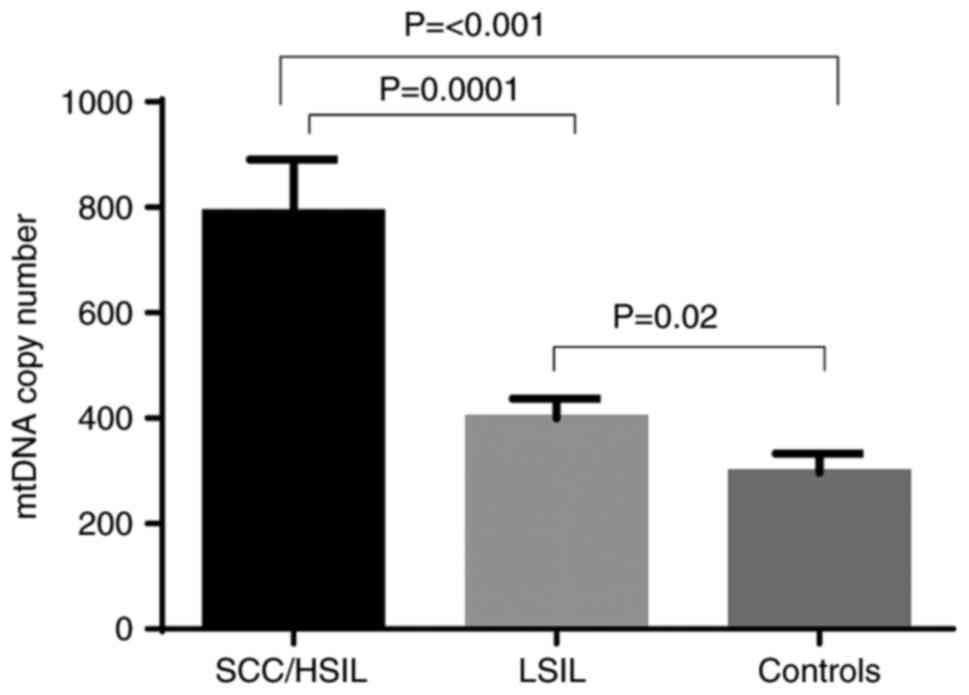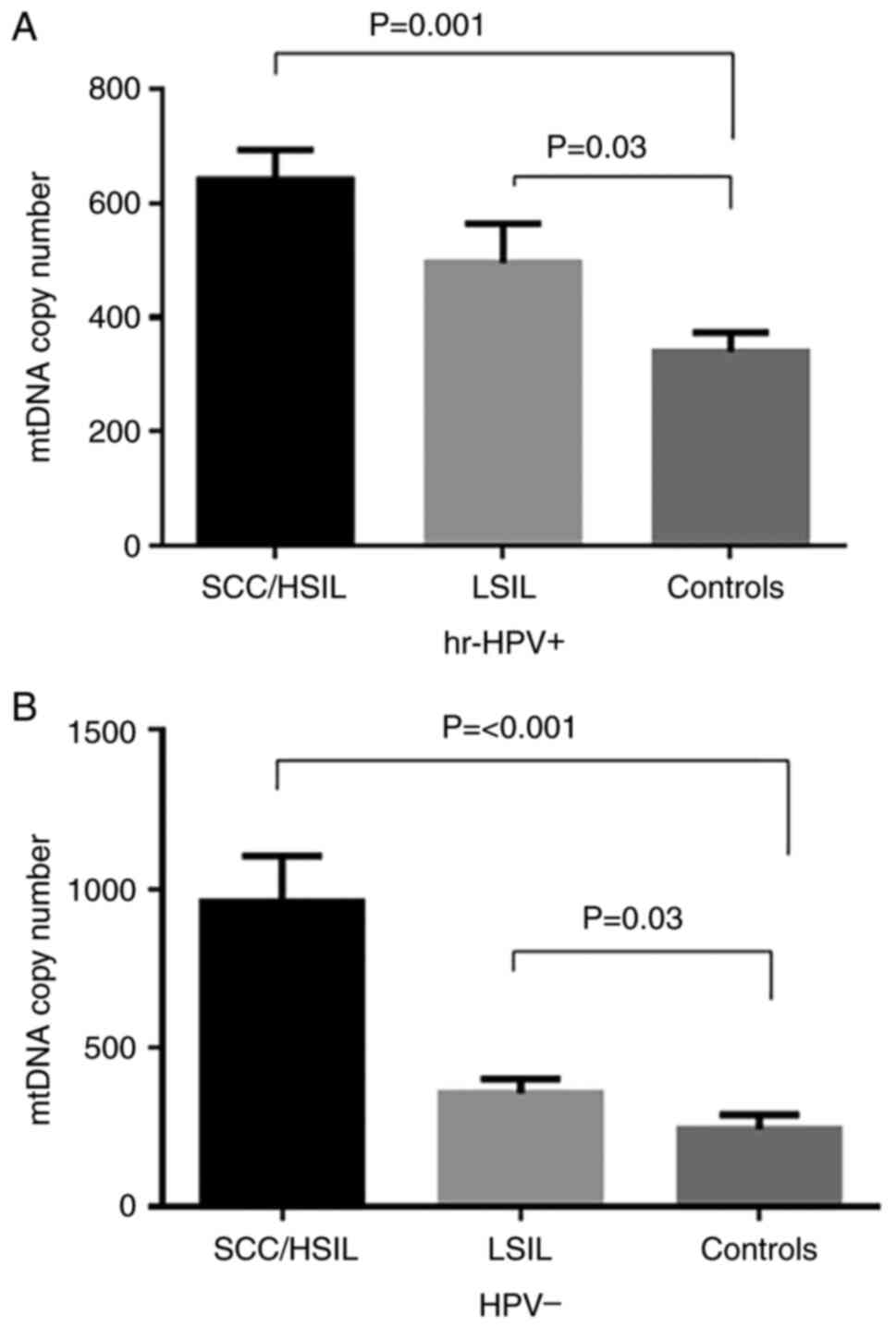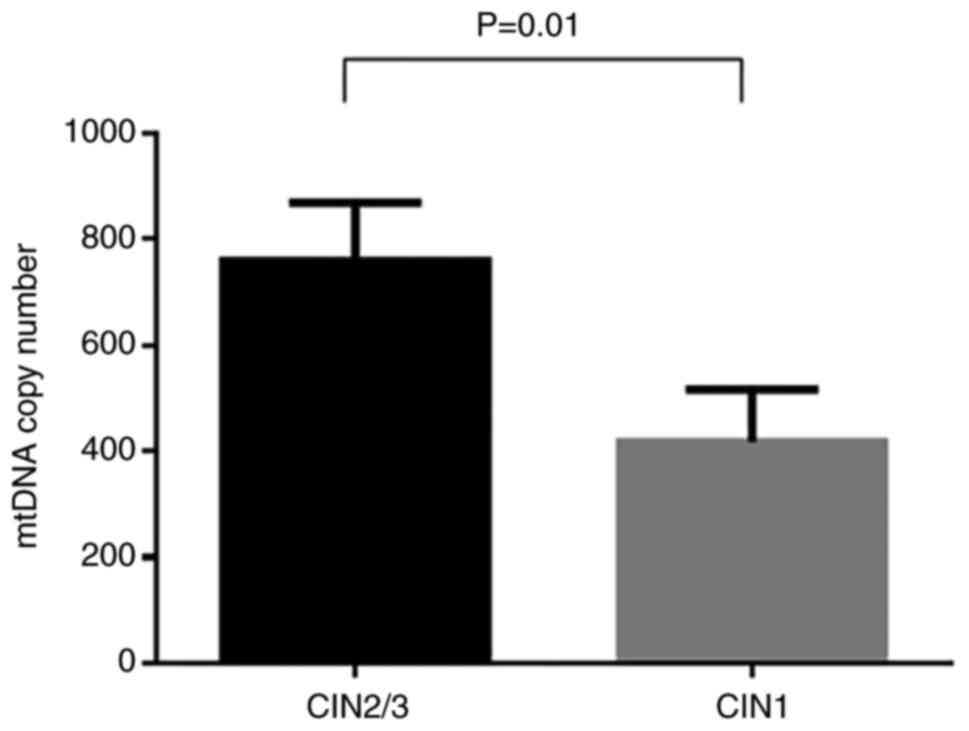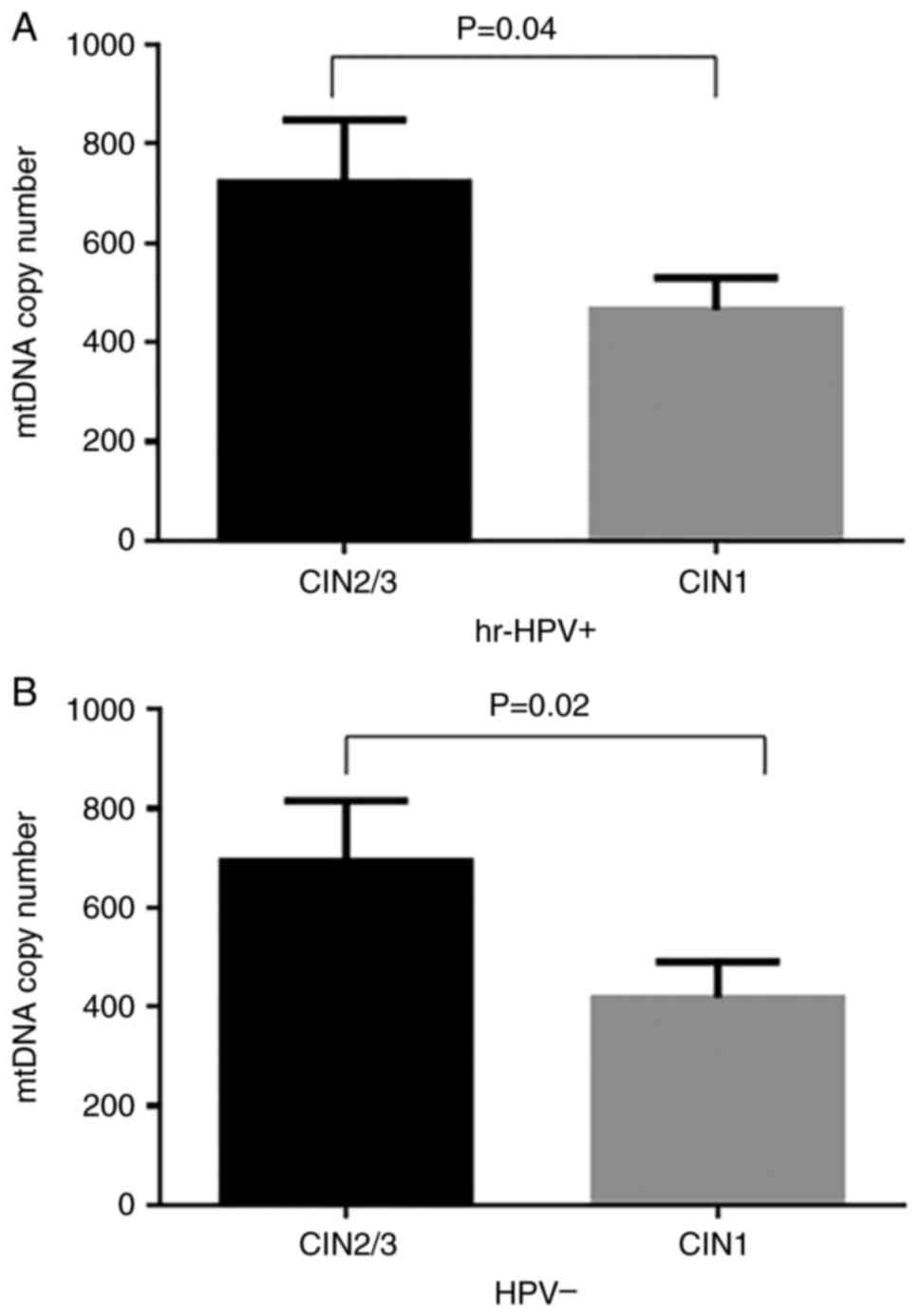|
1
|
Torre LA, Bray F, Siegel RL, Ferlay J,
Lortet-Tieulent J and Jemal A: Global cancer statistics, 2012. CA
Cancer J Clin. 65:87–108. 2015.PubMed/NCBI View Article : Google Scholar
|
|
2
|
Mattiuzzi C and Lippi G: Cancer
statistics: A comparison between World Health Organization (WHO)
and Global Burden of Disease (GBD). Eur J Public Health.
30:1026–1027. 2020.PubMed/NCBI View Article : Google Scholar
|
|
3
|
Alkhalawi E, Al-Madouj A and Al-Zahrani A:
Cervical cancer incidence and trends among nationals of the gulf
cooperation council states, 1998-2012. Gulf J Oncolog. 1:7–13.
2019.PubMed/NCBI
|
|
4
|
zur Hausen H: Papillomaviruses and cancer:
From basic studies to clinical application. Nat Rev Cancer.
2:342–350. 2002.PubMed/NCBI View
Article : Google Scholar
|
|
5
|
Zhang S, Xu H, Zhang L and Qiao Y:
Cervical cancer: Epidemiology, risk factors and screening. Chin J
Cancer Res. 32:720–728. 2020.PubMed/NCBI View Article : Google Scholar
|
|
6
|
Roura E, Castellsague X, Pawlita M,
Travier N, Waterboer T, Margall N, Bosch FX, de Sanjosé S, Dillner
J, Gram IT, et al: Smoking as a major risk factor for cervical
cancer and pre-cancer: Results from the EPIC cohort. Int J Cancer.
135:453–466. 2014.PubMed/NCBI View Article : Google Scholar
|
|
7
|
Gissmann L and zur Hausen H: Partial
characterization of viral DNA from human genital warts
(Condylomata acuminata). Int J Cancer. 25:605–609.
1980.PubMed/NCBI View Article : Google Scholar
|
|
8
|
Schiffman M, Castle PE, Jeronimo J,
Rodriguez AC and Wacholder S: Human papillomavirus and cervical
cancer. Lancet. 370:890–907. 2007.PubMed/NCBI View Article : Google Scholar
|
|
9
|
Bloem P and Ogbuanu I: Vaccination to
prevent human papillomavirus infections: From promise to practice.
PLoS Med. 14(e1002325)2017.PubMed/NCBI View Article : Google Scholar
|
|
10
|
US Preventive Services Task Force. Curry
SJ, Krist AH, Owens DK, Barry MJ, Caughey AB, Davidson KW, Doubeni
CA, Epling JW Jr, Kemper AR, et al: Screening for CERVICAL CANcer:
US preventive services task force recommendation statement. JAMA.
320:674–686. 2018.PubMed/NCBI View Article : Google Scholar
|
|
11
|
Delpero E and Selk A: Shifting from
cytology to HPV testing for cervical cancer screening in Canada.
CMAJ. 194:E613–E615. 2022.PubMed/NCBI View Article : Google Scholar
|
|
12
|
Aitken CA, van Agt HME, Siebers AG, van
Kemenade FJ, Niesters HGM, Melchers WJG, Vedder JEM, Schuurman R,
van den Brule AJC, van der Linden HC, et al: Introduction of
primary screening using high-risk HPV DNA detection in the Dutch
cervical cancer screening programme: A population-based cohort
study. BMC Med. 17(228)2019.PubMed/NCBI View Article : Google Scholar
|
|
13
|
Blatt AJ, Kennedy R, Luff RD, Austin RM
and Rabin DS: Comparison of cervical cancer screening results among
256,648 women in multiple clinical practices. Cancer Cytopathol.
123:282–288. 2015.PubMed/NCBI View Article : Google Scholar
|
|
14
|
Petry KU, Liebrich C, Luyten A, Zander M
and Iftner T: Surgical staging identified false HPV-negative cases
in a large series of invasive cervical cancers. Papillomavirus Res.
4:85–89. 2017.PubMed/NCBI View Article : Google Scholar
|
|
15
|
Clifford GM, Smith JS, Plummer M, Munoz N
and Franceschi S: Human papillomavirus types in invasive cervical
cancer worldwide: A meta-analysis. Br J Cancer. 88:63–73.
2003.PubMed/NCBI View Article : Google Scholar
|
|
16
|
Guan P, Howell-Jones R, Li N, Bruni L, de
Sanjosé S, Franceschi S and Clifford GM: Human papillomavirus types
in 115,789 HPV-positive women: A meta-analysis from cervical
infection to cancer. Int J Cancer. 131:2349–2359. 2012.PubMed/NCBI View Article : Google Scholar
|
|
17
|
Hohn AK, Brambs CE, Hiller GGR, May D,
Schmoeckel E and Horn LC: 2020 WHO classification of female genital
tumors. Geburtshilfe Frauenheilkd. 81:1145–1153. 2021.PubMed/NCBI View Article : Google Scholar
|
|
18
|
Arezzo F, Cormio G, Loizzi V, Cazzato G,
Cataldo V, Lombardi C, Ingravallo G, Resta L and Cicinelli E:
HPV-Negative cervical cancer: A narrative review. Diagnostics
(Basel). 11(952)2021.PubMed/NCBI View Article : Google Scholar
|
|
19
|
Fernandes A, Viveros-Carreno D, Hoegl J,
Avila M and Pareja R: Human papillomavirus-independent cervical
cancer. Int J Gynecol Cancer. 32:1–7. 2022.PubMed/NCBI View Article : Google Scholar
|
|
20
|
Yusoff AAM, Abdullah WSW, Khair SZNM and
Radzak SMA: A comprehensive overview of mitochondrial DNA 4977-bp
deletion in cancer studies. Oncol Rev. 13(409)2019.PubMed/NCBI View Article : Google Scholar
|
|
21
|
Ksiezakowska-Lakoma K, Zyla M and
Wilczynski JR: Mitochondrial dysfunction in cancer. Prz
Menopauzalny. 13:136–144. 2014.PubMed/NCBI View Article : Google Scholar
|
|
22
|
Kabekkodu SP, Bhat S, Mascarenhas R,
Mallya S, Bhat M, Pandey D, Kushtagi P, Thangaraj K, Gopinath PM
and Satyamoorthy K: Mitochondrial DNA variation analysis in
cervical cancer. Mitochondrion. 16:73–82. 2014.PubMed/NCBI View Article : Google Scholar
|
|
23
|
Warowicka A, Kwasniewska A and
Gozdzicka-Jozefiak A: Alterations in mtDNA: A qualitative and
quantitative study associated with cervical cancer development.
Gynecol Oncol. 129:193–198. 2013.PubMed/NCBI View Article : Google Scholar
|
|
24
|
Zhai K, Chang L, Zhang Q, Liu B and Wu Y:
Mitochondrial C150T polymorphism increases the risk of cervical
cancer and HPV infection. Mitochondrion. 11:559–563.
2011.PubMed/NCBI View Article : Google Scholar
|
|
25
|
DiMauro S and Wallace DC: Mitochondrial
DNA in Human Pathology. Raven Press, New York, NY, 1993.
|
|
26
|
Clay Montier LL, Deng JJ and Bai Y: Number
matters: Control of mammalian mitochondrial DNA copy number. J
Genet Genomics. 36:125–131. 2009.PubMed/NCBI View Article : Google Scholar
|
|
27
|
Lee HC and Wei YH: Mitochondrial
biogenesis and mitochondrial DNA maintenance of mammalian cells
under oxidative stress. Int J Biochem Cell Biol. 37:822–834.
2005.PubMed/NCBI View Article : Google Scholar
|
|
28
|
Lee HC, Yin PH, Lu CY, Chi CW and Wei YH:
Increase of mitochondria and mitochondrial DNA in response to
oxidative stress in human cells. Biochem J. 348:425–432.
2000.PubMed/NCBI
|
|
29
|
Lee JW, Park KD, Im JA, Kim MY and Lee DC:
Mitochondrial DNA copy number in peripheral blood is associated
with cognitive function in apparently healthy elderly women. Clin
Chim Acta. 411:592–596. 2010.PubMed/NCBI View Article : Google Scholar
|
|
30
|
Pyle A, Anugrha H, Kurzawa-Akanbi M,
Yarnall A, Burn D and Hudson G: Reduced mitochondrial DNA copy
number is a biomarker of Parkinson's disease. Neurobiol Aging.
38:216 e7–216 e10. 2016.PubMed/NCBI View Article : Google Scholar
|
|
31
|
Svendsen AJ, Tan Q, Jakobsen MA,
Thyagarajan B, Nygaard M, Christiansen L and Mengel-From J: White
blood cell mitochondrial DNA copy number is decreased in rheumatoid
arthritis and linked with risk factors. A twin study. J Autoimmun.
96:142–146. 2019.PubMed/NCBI View Article : Google Scholar
|
|
32
|
Reznik E, Miller ML, Senbabaoglu Y, Riaz
N, Sarungbam J, Tickoo SK, Al-Ahmadie HA, Lee W, Seshan VE, Hakimi
AA and Sander C: Mitochondrial DNA copy number variation across
human cancers. Elife. 5(e10769)2016.PubMed/NCBI View Article : Google Scholar
|
|
33
|
Hu L, Yao X and Shen Y: Altered
mitochondrial DNA copy number contributes to human cancer risk:
Evidence from an updated meta-analysis. Sci Rep.
6(35859)2016.PubMed/NCBI View Article : Google Scholar
|
|
34
|
Sun W, Qin X, Zhou J, Xu M, Lyu Z, Li X,
Zhang K, Dai M, Li N and Hang D: Mitochondrial DNA copy number in
cervical exfoliated cells and risk of cervical cancer among
HPV-positive women. BMC Womens Health. 20(139)2020.PubMed/NCBI View Article : Google Scholar
|
|
35
|
Nayar R and Wilbur DC: The Pap test and
Bethesda 2014. Cancer Cytopathol. 123:271–281. 2015.PubMed/NCBI View Article : Google Scholar
|
|
36
|
Al-Awadhi R, Chehadeh W and Kapila K:
Prevalence of human papillomavirus among women with normal cervical
cytology in Kuwait. J Med Virol. 83:453–460. 2011.PubMed/NCBI View Article : Google Scholar
|
|
37
|
Alwehaidah MS, AlFadhli S and Al-Kafaji G:
Leukocyte mitochondrial DNA copy number is a potential non-invasive
biomarker for psoriasis. PLoS One. 17(e0270714)2022.PubMed/NCBI View Article : Google Scholar
|
|
38
|
Livak KJ and Schmittgen TD: Analysis of
relative gene expression data using real-time quantitative PCR and
the 2(-Delta Delta C(T)) Method. Methods. 25:402–408.
2001.PubMed/NCBI View Article : Google Scholar
|
|
39
|
Filograna R, Mennuni M, Alsina D and
Larsson NG: Mitochondrial DNA copy number in human disease: The
more the better? FEBS Lett. 595:976–1002. 2021.PubMed/NCBI View Article : Google Scholar
|
|
40
|
Al-Kafaji G, Bakheit HF, Alharbi MA,
Farahat AA, Jailani M, Ebrahin BH and Bakhiet M: Mitochondrial DNA
copy number in peripheral blood as a potential non-invasive
biomarker for multiple sclerosis. Neuromolecular Med. 22:304–313.
2020.PubMed/NCBI View Article : Google Scholar
|
|
41
|
Abd Radzak SM, Mohd Khair SZN, Ahmad F,
Patar A, Idris Z and Mohamed Yusoff AA: Insights regarding
mitochondrial DNA copy number alterations in human cancer (Review).
Int J Mol Med. 50(104)2022.PubMed/NCBI View Article : Google Scholar
|
|
42
|
Mei H, Sun S, Bai Y, Chen Y, Chai R and Li
H: Reduced mtDNA copy number increases the sensitivity of tumor
cells to chemotherapeutic drugs. Cell Death Dis.
6(e1710)2015.PubMed/NCBI View Article : Google Scholar
|
|
43
|
Woodman CB, Collins SI and Young LS: The
natural history of cervical HPV infection: Unresolved issues. Nat
Rev Cancer. 7:11–22. 2007.PubMed/NCBI View Article : Google Scholar
|
|
44
|
Bedell SL, Goldstein LS, Goldstein AR and
Goldstein AT: Cervical cancer screening: Past, present, and future.
Sex Med Rev. 8:28–37. 2020.PubMed/NCBI View Article : Google Scholar
|
|
45
|
Williams VM, Filippova M, Filippov V,
Payne KJ and Duerksen-Hughes P: Human papillomavirus type 16 E6*
induces oxidative stress and DNA damage. J Virol. 88:6751–6761.
2014.PubMed/NCBI View Article : Google Scholar
|
|
46
|
Marullo R, Werner E, Zhang H, Chen GZ,
Shin DM and Doetsch PW: HPV16 E6 and E7 proteins induce a chronic
oxidative stress response via NOX2 that causes genomic instability
and increased susceptibility to DNA damage in head and neck cancer
cells. Carcinogenesis. 36:1397–1406. 2015.PubMed/NCBI View Article : Google Scholar
|
|
47
|
Buckley CH, Butler EB and Fox H: Cervical
intraepithelial neoplasia. J Clin Pathol. 35:1–13. 1982.PubMed/NCBI View Article : Google Scholar
|
|
48
|
Leeman A, Del Pino M, Marimon L, Torné A,
Ordi J, Ter Harmsel B, Meijer CJLM, Jenkins D, Van Kemenade FJ and
Quint WGV: Reliable identification of women with CIN3+ using hrHPV
genotyping and methylation markers in a cytology-screened referral
population. Int J Cancer. 144:160–168. 2019.PubMed/NCBI View Article : Google Scholar
|
|
49
|
Coquillard G, Palao B and Patterson BK:
Quantification of intracellular HPV E6/E7 mRNA expression increases
the specificity and positive predictive value of cervical cancer
screening compared to HPV DNA. Gynecol Oncol. 120:89–93.
2011.PubMed/NCBI View Article : Google Scholar
|
|
50
|
Rai NK, Panjwani G, Ghosh AK, Haque R and
Sharma LK: Analysis of mitochondrial DNA copy number variation in
blood and tissue samples of metastatic breast cancer patients (A
pilot study). Biochem Biophys Rep. 26(100931)2021.PubMed/NCBI View Article : Google Scholar
|
|
51
|
Chen N, Wen S, Sun X, Fang Q, Huang L, Liu
S, Li W and Qiu M: Elevated Mitochondrial DNA copy number in
peripheral blood and tissue predict the opposite outcome of cancer:
A meta-analysis. Sci Rep. 6(37404)2016.PubMed/NCBI View Article : Google Scholar
|















